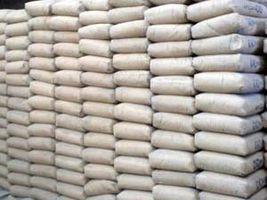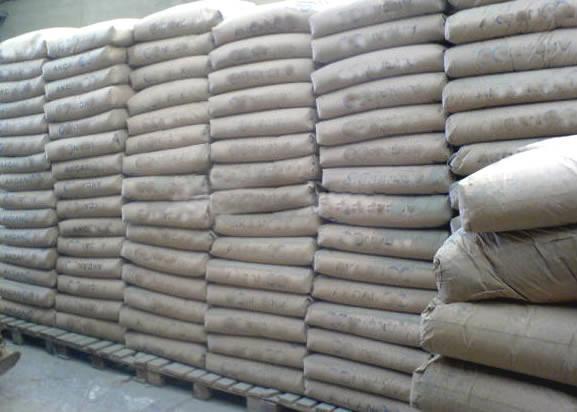Product Description
HCSAF binder cement,high performance concrete,sulfoaluminate cement
General characteristics
HCSA BINDER is a hydraulic binder based on calcium sulphoaluminate, rather than calcium aluminates which are the basis of Calcium Aluminates Cement or calcium silicates which are the basis of Portland Cement. The difference gives HCSA Binder properties particularly suited to formulators of products such as self-leveling or self-smoothing compounds, rapid hardening screeds, tile adhesives, non-shrink grouts, rapid setting and special mortars.
HCSA Binder is used in formulated products either as a hydraulic binder by itself or with the addition of calcium sulphates or in combination with Portland cement. The setting time is quicker than that of Portland cement, and it also has a rapid strength development. HCSA BINDER does not release free lime during hydration thus eliminates the major cause of efflorescence.
HCSA Binder is manufactured under a strict quality assurance systems GB/T 19001-2000 (i.e. ISO9001:2000) and GB/T 24001-1996 (i.e. ISO 14001:1996)) which accommodates the technical requirements of building chemistry formulators.
HCSA Binder is normally supplied in one-ton bag which include a moister resistant barrier. However, in common with all hydraulic binders HCSA Binder must be kept from moisture, and can retain its properties for up to six months when properly stored.
The properties of HCSA Binder conform to the standards of the manufacturer and to the Chinese relevant standards.
Chemical Analysis
The chemical analysis of HCSA Binder has been determined according to the following:
GB/T 176-1996 Methods of chemical analysis for cement
Main Constituents (%)
|
|
SiO2
|
Al2O3
|
Fe2O3
|
CaO
|
MgO
|
TiO2
|
SO3
|
|
Usual Range
|
TypeⅠ
|
4.5-6.5
|
36.5-39
|
1.5-2.5
|
40.0-41.5
|
1.5-2.5
|
1.0-1.5
|
9.0-11.0
|
|
TypeⅡ
|
6.6-8.0
|
35.0-37.0
|
1.5-3.5
|
40.5-42.5
|
1.5-2.5
|
1.0-1.5
|
8.5-10.5
|
|
TypeⅢ
|
8.5-9.5
|
34-35.5
|
1.5-3.5
|
41.5-43.5
|
1.5-2.5
|
1.0-1.5
|
8.0-9.5
|
|
Specification
limit
|
TypeⅠ
|
<7.0
|
>36.0
|
<3.0
|
39.5-42.0
|
<2.5
|
<1.8
|
8.5-12.0
|
|
TypeⅡ
|
≤8.0
|
≥35.0
|
≤4.0
|
40.0-43.0
|
<2.5
|
<2.0
|
8.0-11.0
|
|
TypeⅢ
|
8.0-10.0
|
34.0-36.0
|
≤4.5
|
41.0-44.0
|
<3.0
|
<2.0
|
7.5-10.0
|
Fineness
Specific Surface Area: according to standard GB/T 8074-2008:
Usual range: 360~430 m2/kg, Specification limit: >360 m2/kg;
Usual range: 450~500 m2/kg, Specification limit: >450 m2/kg.
Hydraulic Properties
The characteristics of HCSA Binder have been tested in accordance with the Chinese standards: GB20472-2006.
Setting time determined at 20℃, using Vicat needle according to GB/T 1346-2001.
Mechanical strength at 20℃, 95% relative humidity according to GB20472-2006 .
|
|
Initial Set
|
Final Set
|
|
Specification
limit
|
>10 Min
|
<350 Min
|
|
Item
|
Age
|
|
1D
|
3 D
|
7 D
|
|
Flexural, MPa
|
72.5
|
>6.0
|
>8.0
|
>9.0
|
|
82.5
|
>7.0
|
>9.0
|
>10.0
|
|
92.5
|
>8.0
|
>10.0
|
>11.0
|
|
Compressive, MPa
|
72.5
|
>50.0
|
>65.0
|
>75.0
|
|
82.5
|
>50.0
|
>75.0
|
>85.0
|
|
92.5
|
>60.0
|
>85.0
|
>95.0
|
Additional information :
(This information is given for reference only.)
Mineral composition
C=CaO, A=Al2O3, S=SiO2 , F=Fe2O3, S =SO3
−Principal mineral phase: calcium sulphoaluminate C4 A3 S
−Secondary phases: C2S, C4AF
Reactivity with Portland cement
HCSA Binder may be used in combination with other mineral products, for example Portland cement, calcium sulphates and fillers, or with organics such as polymers in latex foam or in redispersible foam.
Depending on the type of mixes and technology employed, HCSA Binder can be used to obtain and control various properties.
The behavior of Portland cement is vary variable. In general, acceleration of set increases progressively with the addition of HCSA Binder. The amount of HCSA Binder needed to obtain a specific setting time varies considerably depending on the origin of the Portland cement and performance can be modified with the use of additives.
The strength development of HCSA Binder/Portland cement and/or Calcium Sulphates depend on the nature of the Portland cement and/or Calcium Sulphates used. In general these mixes will develop mechanical strength at a very early stage (several hours). With some type of Portland cements and in formulated products containing additives which control the setting and hydration, the long term properties is similar to those of the original Portland cement, however it is necessary to check the behavior of each Portland cement used.
The characteristics of Portland cement to be considered are:
- C3A content
- Mineral admixture type and content
- Type of Calcium Sulphate used
Additives will also influence the properties of these mixes:
- Setting time
- Rheology
- Mechanical performance
These properties are applied to obtain a wide range of products:
- Fast setting cements
- Rapid hardening mortars
- Tile adhesives
- Self-leveling compounds
- Non-shrink grouts
- Water stopping mortars
- etc
With a careful selection of the constituents (OPC, calcium sulphates, additives), it is possible to create mixes with a range of different hydraulic properties:
- Adjustable setting time
- Rheology adapted to the application
- High early strength
- High long term strength
- Shrinkage compensation
Use of Additives
HCSA Binder may be used in combination with chemical additives such as:
- polymers, either in latex form or redispersible powder form
- defoamers
- retarders
- accelerators
- plasticizers/superplasticizers
- rheology modifiers
- fibers
Payment Terms︰
T/T,L/C
Product Image



